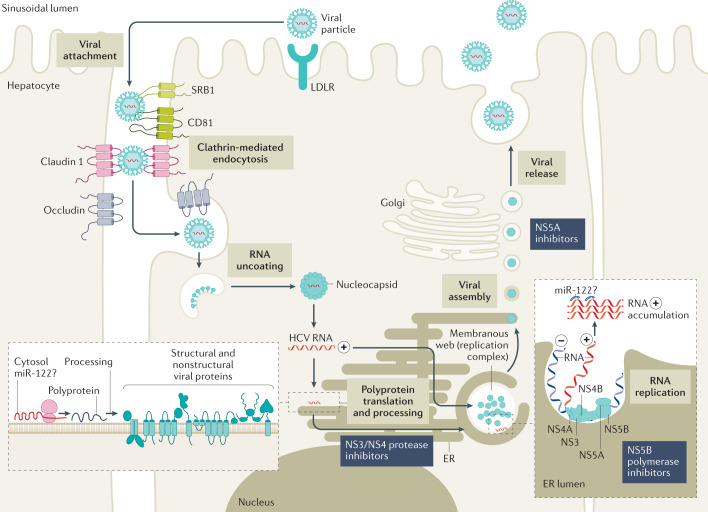Fig. 4. HCV life cycle.
Entry of hepatitis C virus (HCV) into hepatocytes is a complex and yet not completely understood process that involves several different host proteins, including CD81, scavenger receptor B type 1 (SRB1), claudin 1 as well as occludin. After endocytosis, the viral envelope fuses with the endosome membrane. This is followed by uncoating of the viral RNA, which is then translated into the polyprotein by host enzymes. Viral proteases are required (for example, nonstructural proteins NS3 and NS4) to process the HCV polyprotein into the various structural and nonstructural viral proteins. The NS5B polymerase assisted by the NS3 helicase is required for the production of HCV RNA positive replicates. For the final step of viral assembly and release, it is assumed that the NS5A protein has a central role. ER, endoplasmic reticulum; LDLR, low-density lipoprotein receptor; miR, microRNA. Adapted from ref.7, Springer Nature Limited.

